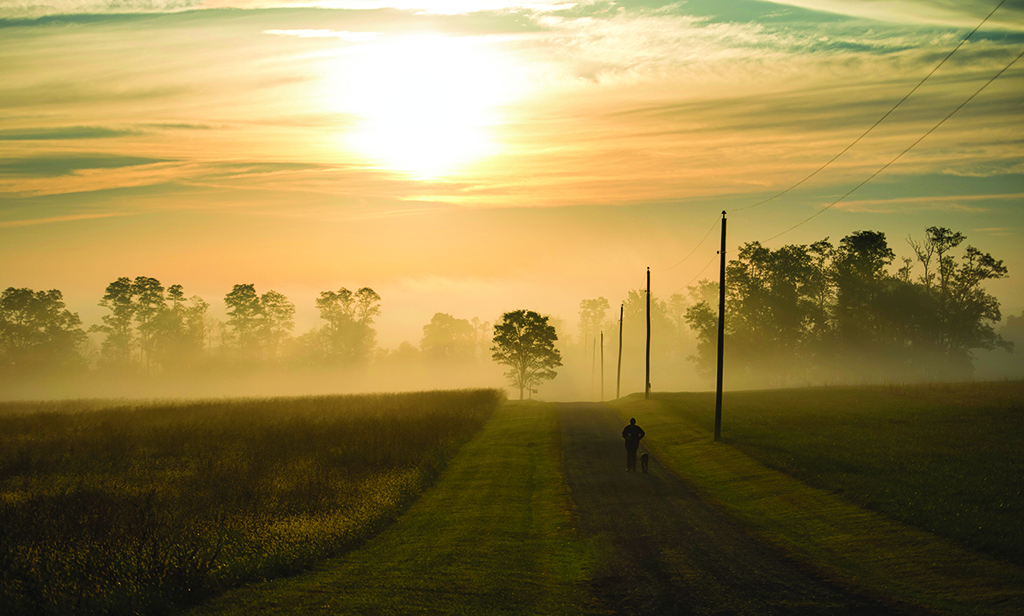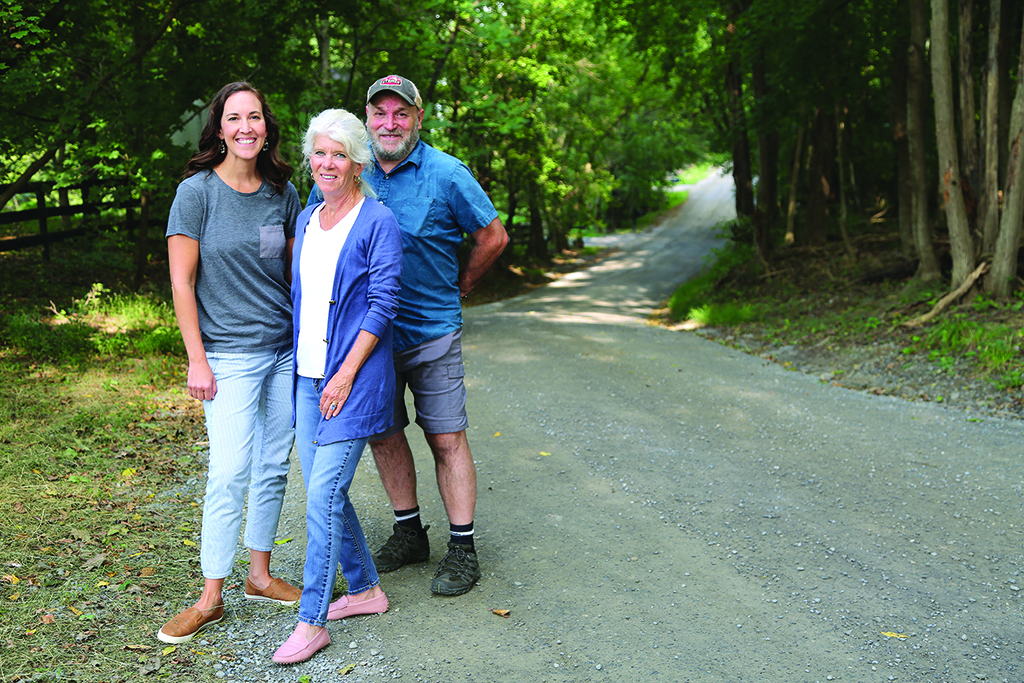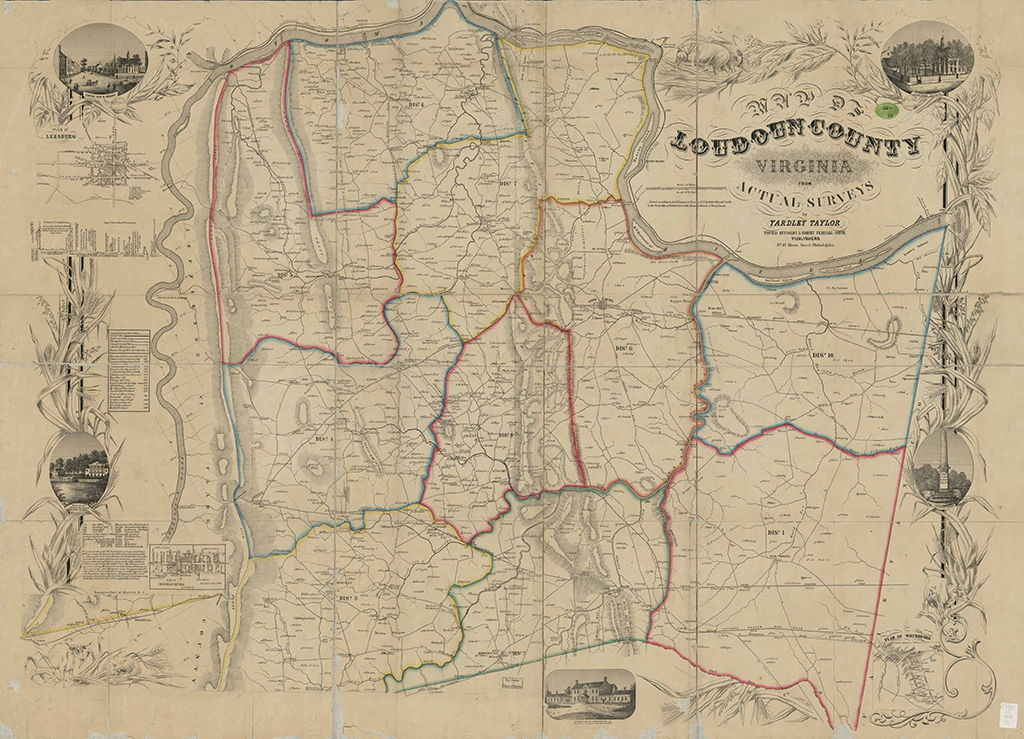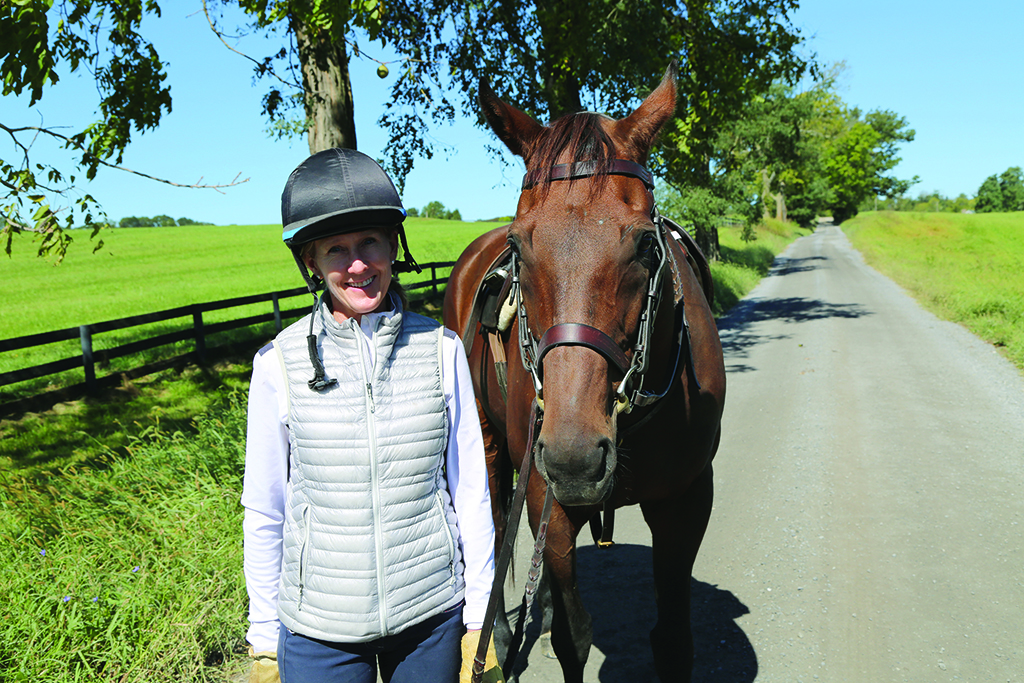America’s Routes

300 Miles of Living Museum
Written by Laticia Headings
When people think about the documentation of history, they often look to old buildings whose structures tell a story, books that recount historical record, and museums that hold artifacts of yesteryear. One less obvious place to consider is the well-travelled thoroughfares that take us to and from in our daily lives – the roads.
Loudoun County has one of the largest and oldest intact networks of rural roads in the U.S., many pre-dating America itself. The roads weave together the past and the present, 300 unpaved miles of a “living museum.” Established by pioneers, these byways shaped the way communities prospered and wars were fought, telling the story of slavery, agriculture, and the automobile.
America’s Routes is a non-profit organization that is passionate about preserving Loudoun’s roads and protecting their intrinsic value, but also making sure they perform to modern standards.
“We’re not just interested in their look, we pay attention to the roads having fewer pot holes and less dust,” Jane Covington says, Route’s team member and preservationist whose Middleburg-based firm Jane Covington Restoration specializes in the renovation of historic properties.
Hillsboro fog, photo by Doug Graham.
In 1854, Yardley Taylor, an abolitionist and Quaker who lived in Goose Creek, published a highly detailed map of Loudoun’s roads. This snapshot reveals a vast, well-developed grid of roads that supported the local wheat mills.
“When he did his map, everything was a crossroad,” Covington says. “All of those abandoned crossroads are still there. The buildings are there. There were more roads in 1854 than there are now. You don’t always see them; they are in people’s fields. You have a double lane of stoned walls and a sunken lane in between and you know that was an old road back then.”
When Covington moved to Middleburg over a decade ago, well-known preservationist Mitch Diamond contacted her. Together, they devised a plan to safeguard the roads as a way to protect two hundred thousand acres of vulnerable land in western Loudoun from development. For them, it was important to preserve the roads from being paved because, ultimately, they are the gateway to expansive development.
Team photo – in Lincoln (left to right): journalist Danielle Nadler, editor Emily Houston, photojournalist Doug Graham. Photo by Laticia Headings.
There was instant synergy in 2016 when Covington and Diamond met journalist and author Danielle Nadler and photojournalist Doug Graham, both of whom were working for Loudoun Now. Nadler and Graham had a joint project of their own in the works, documenting the local roads in their spare time as a way to celebrate their historical significance.
Two missions collided. “Danielle and Doug were interested in the roads,” Covington says. “Mitch and I came at it from the point of land preservation, solely for that purpose. The confluence is a better result. A mixed team is always a stronger team. It’s four areas of expertise working together.”
“I have an agenda here and it’s to save this place that I love so much,” Graham says. “We’re attempting to educate people. Telling this story in photos is a way to show folks what they stand to lose if they alter it in any way.” Graham’s photography has received awards throughout the state for being the newspaper photographer of the year and wildlife photographer of the year.
Of the 700 miles of public roads in Loudoun’s rural policy area, one third of them are unpaved. In order to bring more attention to the cause, Graham produced a short film called “The Long Road Home.” In 2019, the film (which can be viewed on the Route’s website) won an Emmy and was the regional winner of the Edward R. Murrow award for excellence in video.
1853 Yardley Taylor Map, the first detailed map of Loudoun County or any part of Northern Virginia. Photo courtesy of Library of Congress.
In addition to Graham’s work, Nadler and Emily Houston, former editor of Horse Times, write fascinating stories about the life that happens on the roads. “The team is amazing,” Covington says. “They tell the stories and take the pictures. They enable the public to understand what we’re doing.”
Together, the team has made substantial progress, both politically and publicly. After seven years of research and a tedious application process spearheaded by Covington, America’s Routes – and 300 miles of rural roads – is now eligible for the National Register of Historic Places, the official list of the Nation’s historic places worthy of preservation. This not only elevates the status of the project, but also establishes a platform of common ground and conversation among interested parties.
This enterprise isn’t without its struggles. The fight to keep and maintain the roads can often be a monumental challenge. Many people who live on or near the roads would like to see them paved for ease of travel, and elected officials don’t always see the value in preserving dirt thoroughfares.
“If we lose these roads, we lose the lifestyle that goes along with it – agriculture and farming, foxhunting, for example,” Covington says.
The roads aren’t just traveled by cars or pleasure riders on horseback. These charming stretches are well-ridden by enclaves of cycling enthusiasts. City folk flee their urban jungles to spend the day pedaling down gravel lanes that echo a well-storied past, surrounded by the epic beauty afforded to them by nature at its best. All part of the rural experience, unique to this area.
Preservationist Jane Covington with her horse, Pearl. Photo by Laticia Headings.
For those interested in what Houston calls “travel by gravel,” there is a three-mile self-guided tour available on the website. The Lincoln Loop, an area once known as Goose Creek, has 20 stops that can be walked, biked, driven, or travelled on horseback. It highlights Quaker architecture and Civil War sites with historic surprises along the way. Professionally guided tours are also in the works for Spring 2021.
Route’s raises funds through individual donations and fundraisers. Their partner, Loudoun 1725 Gravel Grinder, also gives a portion of the proceeds from their annual event, this year taking place on Oct. 25th. The scenic bike ride ventures past wineries, horse farms, estates, and historical sites.
Different points of view will likely continue as development further encroaches into western Loudoun, and America’s Routes will continue to forge on to protect the roads.
“The goal is to save the roads into the next century and for the next 300 years,” Covington says. ML
For more information, visit americasroutes.com.
Published in the October 2020 issue of Middleburg Life.





